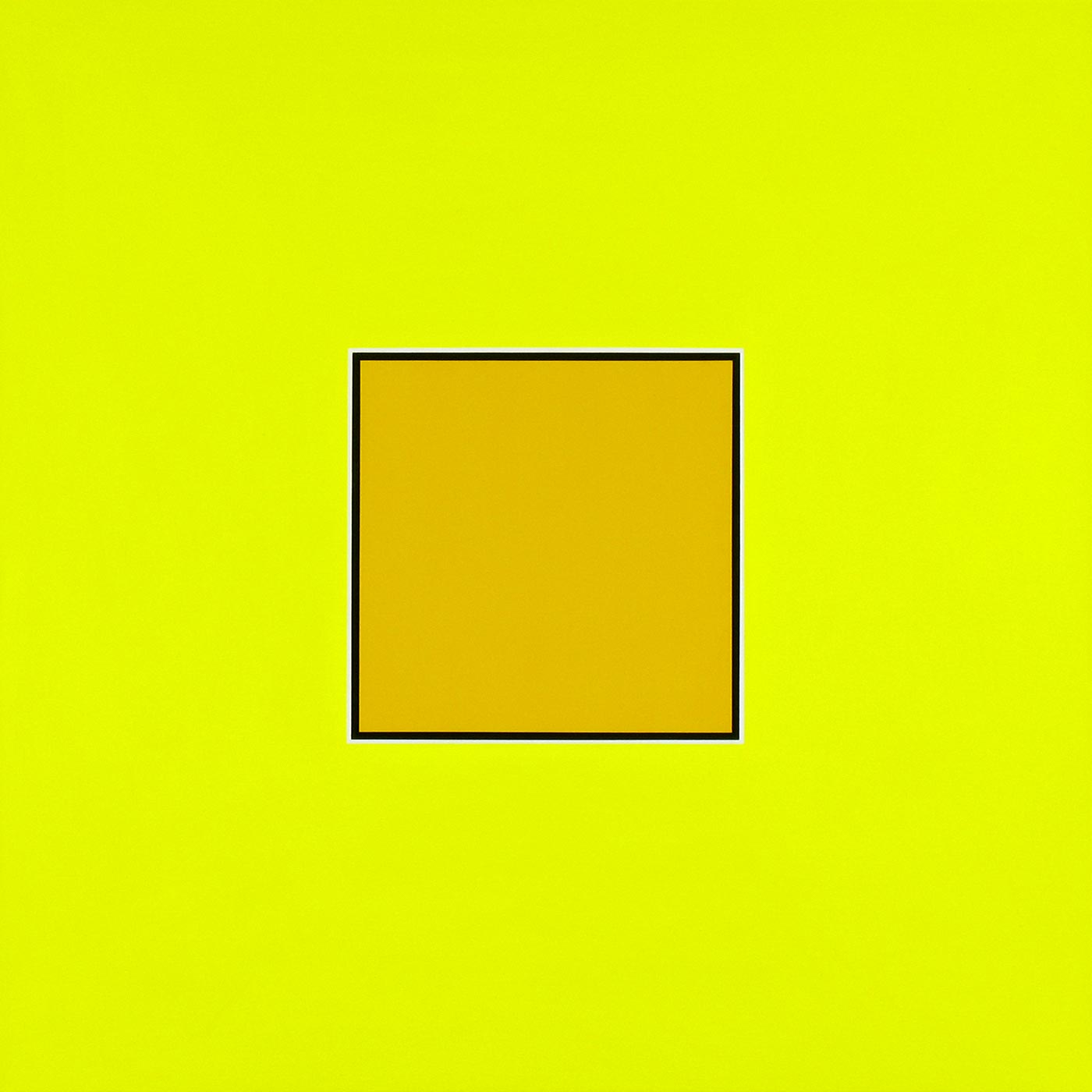
»Concrete Art present with Ina von Jan«
written by Eugen Gomringer, 2010
An astute observer of Concrete Art, which, in various guises, has been evolving over a period of roughly one hundred years, recently claimed that its degree of its renown may be shown in the form of two circles: by an inner circle, which, abundant of vitality and intellectual interest links numerous artists and art enthusiasts throughout the world, and by an outer circle to which even the term “Concrete Art” is only rarely made reference, and about which precise knowledge as to content have been lost. Whoever belongs to the inner circle cannot rest content with such a scission within the art word. Would it be unrealistic not to accept the ignorance of existence and one hundred years development, or would it rather be unrealistic to remain ignorant of Concrete Art as manifested by hundreds of artists and galleries? One might well see it like this. And yet one cannot help but think that the art of the present-day, which, like no other form grapples directly with human perception and under the venerable law of repose and movement, while carrying out exemplary experiments frequently in visual accordance with natural scientific knowledge, remains unacknowledged by the majority of the living.
That such detachment has not always been the case, and that the inception of Concrete Art – various information is available, and, as is well known the Manifesto of 1930 explicitly deals with its founding – would have never come about had it not been for closer links to authentic social developments, or had the ideas of the latter been less virulent than they were. One ought to note that the development of this art by no means ran a single course, that there were repeated exceptions to the rule (as the similar exhibition title would suggest), that the concept “concrete” lost ground to other more contemporary concepts, and that philosophical-ethical rationalization was perceived as becoming increasingly obsolete.
In spite of this, when observing all artistic processes, their effects and their side effects, one cannot fail to overlook the fact that the concrete pictorial world has acquired multiple realities that invite being put to the test by successive generations. This is to be distinguished from professional differentiation in the fields of colour, colour field, line and space – but, frequently, their synergies as well. In artistic production itself, this professionalism of creation and construction occupies our special attention.
When encountering Ina von Jan’s pictures, it would seem necessary to once generally point out the partial acceptance of Concrete Art. This is in clear contrast to the single-minded dedication with which the artist has worked on the development of Concrete Art over the last twenty years. In some senses this may be observed in her approach, which bodes well for the future potential of a movement currently undergoing renewal. When a good few years ago a description of the first location was sought, one recalled not only various ancestors such as Max Bill and Richard Paul Lohse and their erstwhile gallery back in the 1940s, but Rudolf Ortner, that exemplary figure and architect together with his influential doctrines which were to later become especially legible in the pictorial world of Ina von Jan. Ortner, by contrast, drew on his studies at the Bauhaus and his acquaintance with Kandinsky and Mies van der Rohe. Hence, it was here that one of the most far-reaching lines in Concrete Art was foreordained. Initially recognisable were the stylistic devices, such as right-angled linear structures and their relationships to surfaces. And the colour blue took precedence over red and incidental yellow. This amounted to a good schooling in order with rules.
However, with a few examples, this already intimates what art means for Ina von Jan today. Whereas, formally several of the pictures were in luminous yellow, now linear structures were either abandoned or else diminished to a bare minimum in favour of a colour. In the words of the artist:
My interest centres on the research and analysis of the effects of colour, the luminosity and colour intensity in various arrangements and their inversions.
Ina von Jan applies various shades of yellow, which forcefully impress themselves upon perception either by way of addition, as in the case of up to nine comparable pictures in a quadratic format, or else enhances or propitiates them by way of bringing them into a reciprocal relation. She draws the viewer’s attention to the effects of the single picture in simultaneously interrupting and augmenting the yellow by using narrow black frames. Here, the simultaneous effect is calibrated, one of the most advanced techniques of concrete colour painting. The fact that everything takes place within the square is something which, for an artist of the likes of Ina von Jan who feels herself fundamentally committed to Concrete Art is no question. What she seeks to attain in her minimal choice of colour, and what she achieves through high levels of concentration, must be based on the neutral form of the quadrate, which, for example, also facilitates serial addition. The enhancing effects by way of inner-pictorial progression are possible only in this aged cultural figure of geometry.
The developmental line in which the artist works is that of concrete colour art, the dimensions of which – as also in the square – were fixed by the interaction of colour by Josef Albers. Here we note how, within the narrow confines of a form and a few colours, tensions may be generated that reflect unforeseen differences in subjective sensibility. Such precision work, without shades and without recourse to disruptive props, is something which is only possible in concrete art. The above-mentioned inner circle in which Ina von Jan is entirely present takes pleasure in such artistic subtleties. The outer circle should be made increasingly aware that this art does indeed convey first-hand aesthetic information to the present-day lifeworld.
© Eugen Gomringer. May 2010
Translated by Justin Morris
